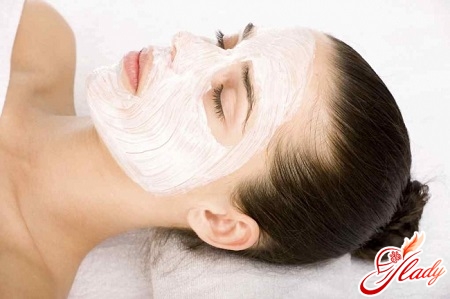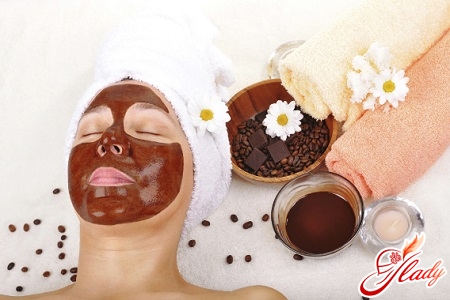 Every woman dreams of preserving her youth andbeauty for many years. A healthy lifestyle, proper nutrition, sports - all this helps to remain attractive until old age. However, our skin also needs additional care. After 25 years, the renewal of epidermal cells slows down, as a result of which the first wrinkles appear. From this age, it is recommended to use all kinds of cosmetics that nourish and moisturize the skin. And after 35 years, you can start using various lifting creams and masks. Modern cosmetology offers many products to maintain youth and beauty. But all of them are ineffective without a procedure such as peeling. Let us explain why. From time to time, skin cells are renewed. However, some of them do not have time to completely exfoliate and remain on the face. This prevents creams and masks from penetrating as deeply as possible. Thus, the effectiveness of cosmetics is reduced several times. Peeling acts in such a way that it removes keratinized particles from the face. Thanks to this, not only are creams and masks better absorbed, but the processes of restoration and regeneration are also activated. There are many types of peeling. Some need to be done only in beauty salons, while others are easy to do at home. Some cleanse the skin with acid, while others use small mechanical particles (such as salt). Each type has its own characteristics. There are more gentle options for the procedure, suitable for almost any skin type and age. Certain types of peeling are suitable only for those with oily skin, as they act quite deeply and aggressively. However, there are also many universal methods of deep cleansing that will be effective for everyone. These include glycolic peeling at home.
Every woman dreams of preserving her youth andbeauty for many years. A healthy lifestyle, proper nutrition, sports - all this helps to remain attractive until old age. However, our skin also needs additional care. After 25 years, the renewal of epidermal cells slows down, as a result of which the first wrinkles appear. From this age, it is recommended to use all kinds of cosmetics that nourish and moisturize the skin. And after 35 years, you can start using various lifting creams and masks. Modern cosmetology offers many products to maintain youth and beauty. But all of them are ineffective without a procedure such as peeling. Let us explain why. From time to time, skin cells are renewed. However, some of them do not have time to completely exfoliate and remain on the face. This prevents creams and masks from penetrating as deeply as possible. Thus, the effectiveness of cosmetics is reduced several times. Peeling acts in such a way that it removes keratinized particles from the face. Thanks to this, not only are creams and masks better absorbed, but the processes of restoration and regeneration are also activated. There are many types of peeling. Some need to be done only in beauty salons, while others are easy to do at home. Some cleanse the skin with acid, while others use small mechanical particles (such as salt). Each type has its own characteristics. There are more gentle options for the procedure, suitable for almost any skin type and age. Certain types of peeling are suitable only for those with oily skin, as they act quite deeply and aggressively. However, there are also many universal methods of deep cleansing that will be effective for everyone. These include glycolic peeling at home.
When is glycol peeling necessary?
First of all, let's figure out what problems the glycolic peeling procedure helps to cope with:

How does glycol peeling work on the skin condition?
Glycolic peeling has become widely used incosmetology relatively recently, in the 90s. Then it was discovered that it is possible to use concentrated solutions of AHA acids. The safest and most gentle acting were glycolic and lactic acids. They penetrate well into the deep layers of the dermis without causing inflammation. Glycolic peeling is based on the action of fruit acid, which is extracted from sugar cane and green grapes. Compared to other organic compounds of this type, it dissolves very well in liquid and has a small molecular weight. Therefore, glycolic acid (also called acetic acid) is able to penetrate into the deep layers of the skin most easily. An additional advantage of this organic compound is that it contains components that stimulate hyaluronic acid, which is rightly called the "elixir of youth". It is responsible for tone, even skin tone and a healthy, fresh appearance. Lack of hyaluronic acid leads to dryness and increased sensitivity of the skin, which causes premature wrinkles. Thus, glycolic acid peeling not only helps to remove dead keratinized skin cells. Thanks to this procedure, pores are cleaned and fine wrinkles disappear. Glycolic peeling is a fairly easy procedure. It does not require special expensive equipment. Therefore, it can be done at home. It is better, of course, to invite an experienced cosmetologist. A specialist will easily select the right composition for the procedure. If for some reason it is not possible to seek the services of a cosmetologist, you can try to do the peeling at home yourself. You will need to purchase high-quality proven products in specialized cosmetics stores. But for this, you must strictly adhere to the rules of the procedure so as not to harm your appearance.
The rules of glycol peeling
Recommendations for skin care in the post-peeling period
It is very important to take proper care of your skin after a glycolic acid peel.

Results of peeling with glycolic acid
Women who have tried glycolic peels inat home, are satisfied after the first procedure. The complexion becomes more even and fresh, a slight drying effect is observed. After a course of procedures, the effect is even more noticeable. Collagen production improves, the sebaceous glands function normalizes and oily shine disappears, fine wrinkles are smoothed out. Glycolic peeling successfully copes with acne and acne marks, and also eliminates excess skin pigmentation. The number of procedures is determined in accordance with the problems you want to get rid of. To give your face a fresh look, 2-3 procedures with a week break are enough. To eliminate minor cosmetic imperfections, a longer course will be required. It is recommended to carry out glycolic peeling at home for 3-4 months every 7-10 days. The number and intensity of procedures directly depends on the skin type.
Precautions when applying glycol peeling
Since glycolic acid is a fairly caustic chemical compound, it is necessary to know a few simple recommendations and precautions for its use at home.
Please study all of the above carefully.recommendations before performing glycolic peeling at home on your own. This will help to achieve greater effectiveness and avoid unpleasant consequences. We recommend reading:









